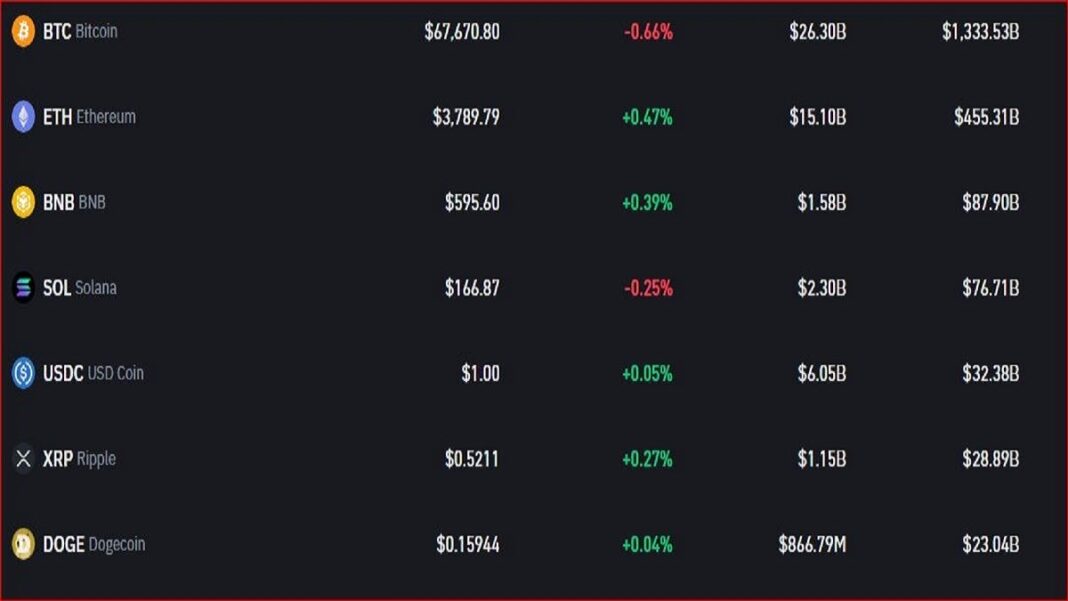1. Introduction to Market Capitalization in Cryptocurrency
Market capitalization, or “market cap,” is a core concept for evaluating the relative value and potential stability of a cryptocurrency. While widely used in the stock market to assess company value, it takes on new meanings in crypto, where volatility and speculation drive prices and market caps. Crypto market cap is calculated by multiplying the price of a token by its circulating supply. Understanding this metric is crucial for anyone looking to navigate the crypto market.
In traditional finance, a high market cap often signals a stable and mature investment, like Apple or Microsoft. In crypto, however, it only signals relative size compared to other assets, which may not equate to stability. For instance, Bitcoin’s market cap reached around $1 trillion at its peak, but its price volatility was still high. This difference highlights why understanding market cap in crypto requires a different approach than in traditional finance.
2. How Crypto Market Cap is Calculated
The market cap formula in cryptocurrency is straightforward:
Market Cap = Token Price × Circulating Supply
Circulating supply represents the amount of the token currently available and actively traded. However, two other supplies can influence market cap:
- Total Supply: Includes all tokens that currently exist, including those locked up in staking or other protocols.
- Maximum Supply: The maximum number of tokens that will ever exist for that cryptocurrency, based on the project’s protocol.
For example, if Ethereum’s price is $3,000 and its circulating supply is around 120 million ETH, then its market cap is $360 billion. This metric helps investors quickly assess where Ethereum stands relative to other cryptocurrencies and traditional assets.
3. Market Cap Classifications: Large-Cap, Mid-Cap, and Small-Cap Cryptocurrencies
Market caps are divided into large-cap, mid-cap, and small-cap categories to assist in risk and growth potential analysis:
- Large-Cap Cryptocurrencies: Generally have a market cap of over $10 billion and include assets like Bitcoin, Ethereum, and Binance Coin. They tend to have more stable trading patterns and investor trust but less explosive growth potential.
- Mid-Cap Cryptocurrencies: Ranging from $1 billion to $10 billion, these include assets like Polkadot and Solana. They might represent growing networks with room to increase in value but also come with greater price fluctuations.
- Small-Cap Cryptocurrencies: Under $1 billion, these assets often include lesser-known or newer projects, such as niche DeFi or NFT tokens. They are highly speculative and volatile but can yield high returns if the project gains adoption.
These categories allow investors to gauge risk and potential reward better. Many diversify across these categories, blending the relative stability of large-cap assets with the growth potential of mid and small-cap cryptocurrencies.
4. Comparing Crypto Market Cap to Traditional Market Cap
While market cap is commonly understood in traditional finance, it takes on unique qualities in the crypto world. In traditional finance, market cap is relatively stable, as companies are valued based on assets, revenue, and growth. However, in crypto, market cap can be driven by speculation, hype, and sudden fluctuations.
Consider a comparison: Amazon’s stock market cap largely reflects its revenue, user base, and profitability. For cryptocurrencies like Dogecoin, however, the market cap may reflect only speculative interest and social media influence, rather than intrinsic value or utility.
This difference underscores the need for additional metrics in crypto valuation. While market cap provides insight into relative size, it doesn’t indicate a project’s viability or adoption, which must be assessed through other data points, including token utility and on-chain activity.
5. Why Market Cap Matters: Assessing the Growth Potential of Cryptocurrencies
Market cap provides insight into a cryptocurrency’s maturity and growth potential:
- Large-cap coins: Like Bitcoin, often offer stability but limited growth, as they are already well-established. Investors might view large caps as less volatile and better long-term holds.
- Mid-cap coins: Represent a balance of potential growth and risk. Coins like Polkadot, for example, are still evolving but may offer significant growth if they gain traction and adoption.
- Small-cap coins: Offer high growth potential but with substantial risk. Some small-cap DeFi projects, for instance, can yield massive returns but are susceptible to market manipulation and high volatility.
Each classification offers a balance between risk and growth potential. Many investors diversify to benefit from the stability of large caps while still capturing growth opportunities in the mid and small-cap segments.
6. Common Misconceptions About Crypto Market Cap
Several common misconceptions about market cap persist in the crypto community. Market cap does not represent the total amount invested in a cryptocurrency. Instead, it is merely the token price multiplied by the circulating supply. Many falsely believe that a high market cap means the asset is more liquid or “safer,” which isn’t necessarily true.
Market cap can be misleading if the price is artificially inflated due to low liquidity or manipulation, particularly in smaller projects. As such, a cryptocurrency’s high market cap should not be equated with strong fundamentals or high liquidity, especially if it is not widely held or actively traded.
7. Crypto Market Cap vs. Fully Diluted Market Cap
Fully Diluted Market Cap (FDM) is another important metric in crypto valuation. It estimates what the market cap would be if all tokens were in circulation. This metric is particularly useful for projects that gradually release tokens, as it helps investors understand potential supply impacts on future valuations.
For instance, if a token has a max supply of 1 billion but only 500 million in circulation, its FDM would be double the current market cap if the price remains constant. This allows investors to anticipate possible inflation in supply and potential price dilution over time.
8. Limitations of Market Cap in Crypto Valuation
While market cap is helpful, it’s limited in its ability to gauge a cryptocurrency’s true value or health. Market cap alone doesn’t account for:
- Utility: A token with high utility may not necessarily have a high market cap.
- Network Activity: High market cap does not always indicate high network usage. A token might have a high price due to scarcity but low transaction volume.
- Liquidity: Some tokens may have high market caps but low liquidity, making them susceptible to price manipulation.
Other metrics, such as total value locked (TVL) for DeFi projects or daily active addresses, provide a fuller picture of a token’s utility and adoption.
9. Additional Valuation Metrics to Consider Beyond Market Cap
In addition to market cap, investors use other metrics for a well-rounded valuation:
- TVL (Total Value Locked): This DeFi-specific metric indicates the amount of assets held within a protocol, providing a sense of its popularity and adoption.
- On-Chain Data: Metrics like transaction volume, hash rate (for PoW projects), and active addresses give insights into a project’s usage and security.
- Developer Activity: The level of ongoing development and updates can signal a project’s long-term commitment and improvement.
- Market Liquidity: Evaluating liquidity helps investors understand how much trading occurs. High liquidity generally means price stability, while low liquidity can lead to drastic price shifts.
10. Making Informed Investment Decisions with Crypto Market Cap
In conclusion, market cap is an essential but limited tool for valuing cryptocurrencies. While it provides a quick snapshot of a coin’s size and relative importance, it should be used with other metrics like on-chain data, utility, and liquidity for a complete analysis.
As crypto markets continue to evolve, new metrics may emerge to offer a more comprehensive view of valuation, especially in sectors like DeFi and NFTs, where traditional financial metrics may fall short. Ultimately, while market cap can guide investment decisions, informed choices come from understanding all available data.
Read morehttps://academy.binance.com/en/articles/crypto-market-capitalization-explained










